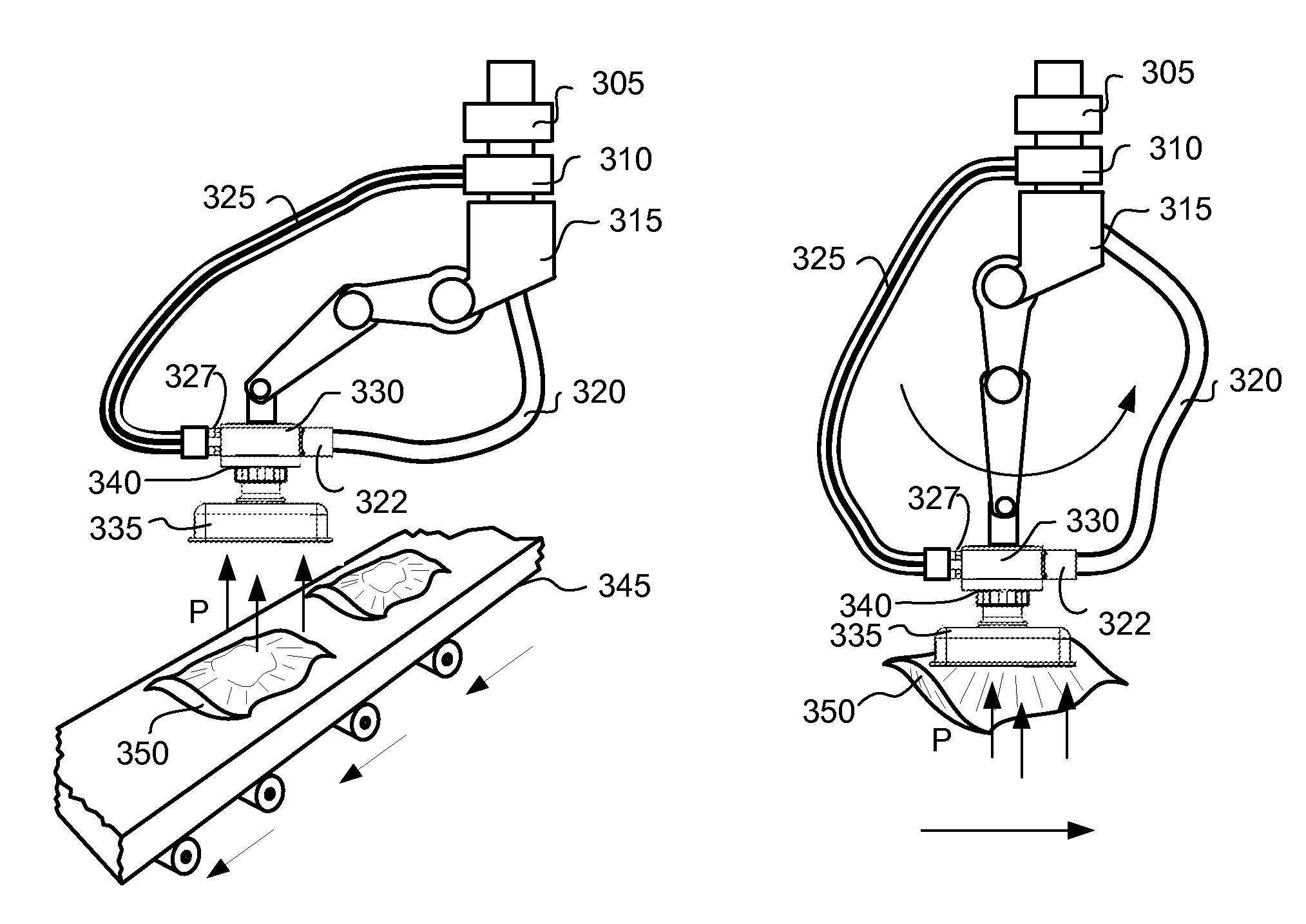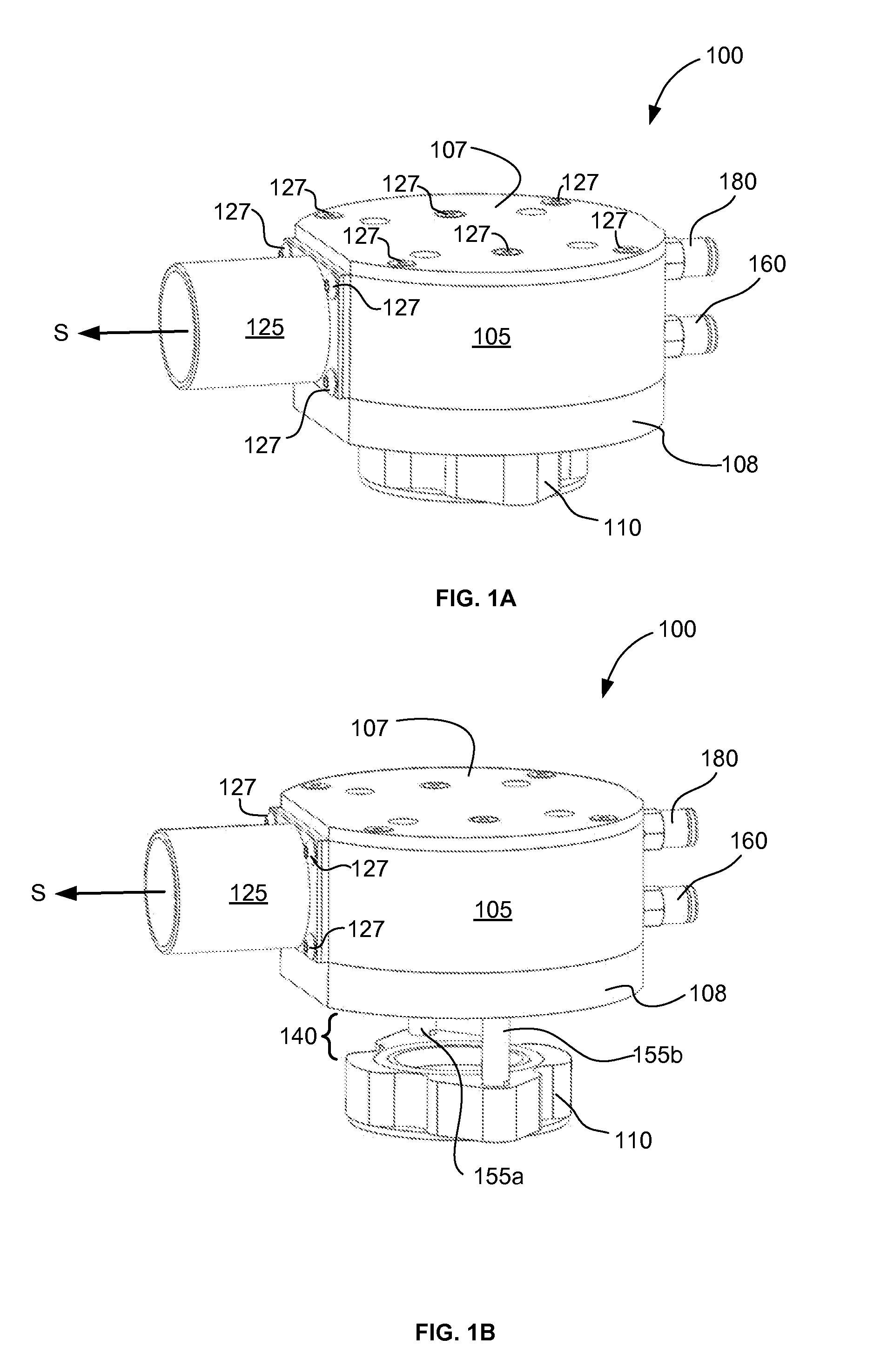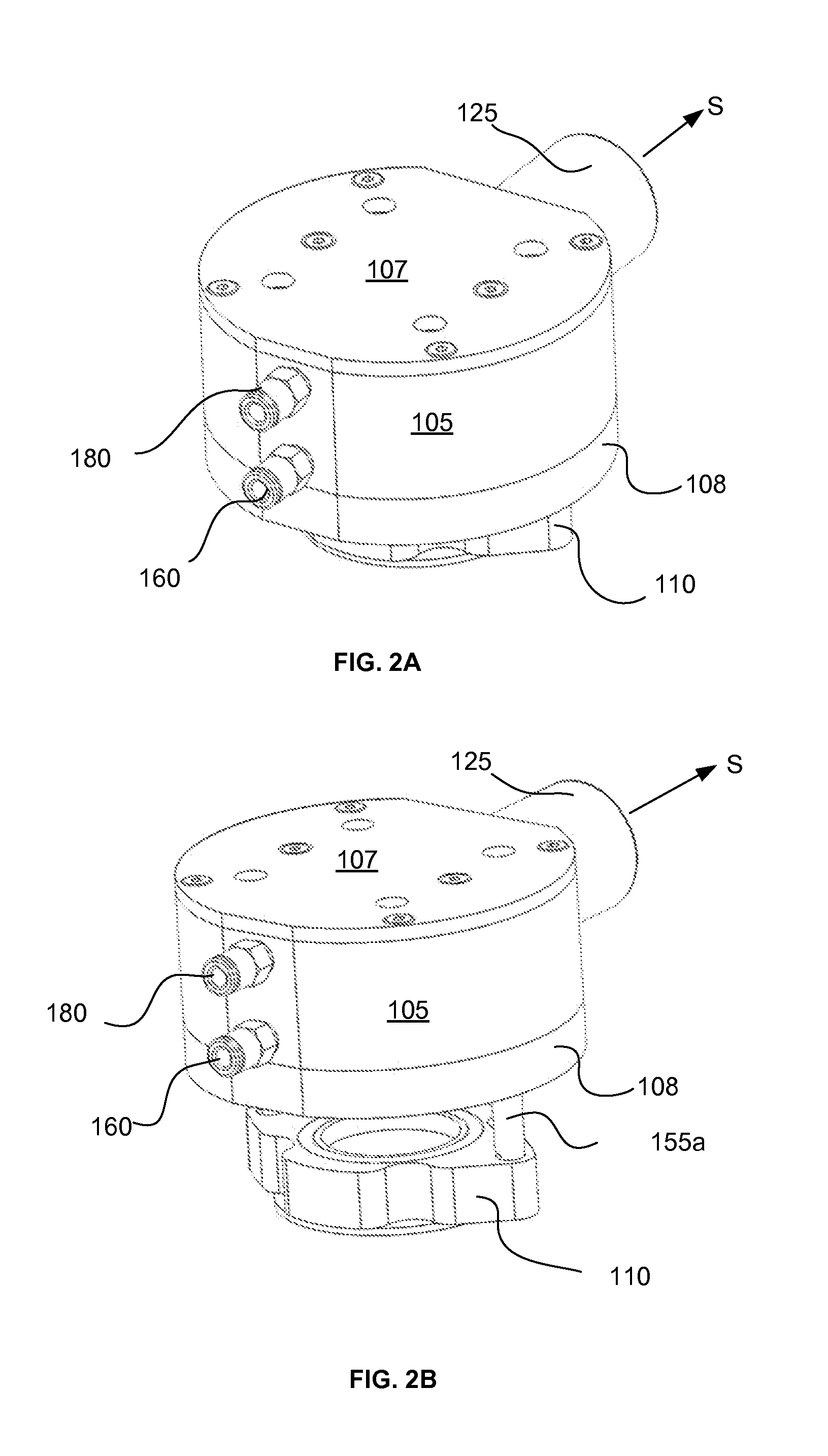Apparatus and Method For Gripping and Releasing Objects
- Summary
- Abstract
- Description
- Claims
- Application Information
AI Technical Summary
Benefits of technology
Problems solved by technology
Method used
Image
Examples
Embodiment Construction
[0037]Non-limiting examples of devices and methods arranged and configured to grip and release objects and materials according to certain embodiments and variations of the present invention will now be described in some detail by reference to the figures.
[0038]FIGS. 1A, 1B, 2A, 2B, 3A, 3B, 4A, 4B and 4C (referred to collectively as FIGS. 1A through 4C) show various views and positions of an exemplary end effector 100 arranged according to one embodiment of the present invention. Right perspective views (from above) of the exemplary end effector 100 are shown in FIGS. 1A and 1B, rear perspective views (from above) are shown in FIGS. 2A and 2B, and front perspective views (from below) are shown and FIGS. 3A and 3B. Left side, top side and bottom side orthogonal views of the exemplary end effector 100 are shown in FIGS. 4A, 4B and 4C, respectively.
[0039]As shown in FIGS. 1A through 4C, exemplary end effector 100 includes a body 105, an adapter flange 110, movably attached to the body 1...
PUM
 Login to View More
Login to View More Abstract
Description
Claims
Application Information
 Login to View More
Login to View More - R&D
- Intellectual Property
- Life Sciences
- Materials
- Tech Scout
- Unparalleled Data Quality
- Higher Quality Content
- 60% Fewer Hallucinations
Browse by: Latest US Patents, China's latest patents, Technical Efficacy Thesaurus, Application Domain, Technology Topic, Popular Technical Reports.
© 2025 PatSnap. All rights reserved.Legal|Privacy policy|Modern Slavery Act Transparency Statement|Sitemap|About US| Contact US: help@patsnap.com



